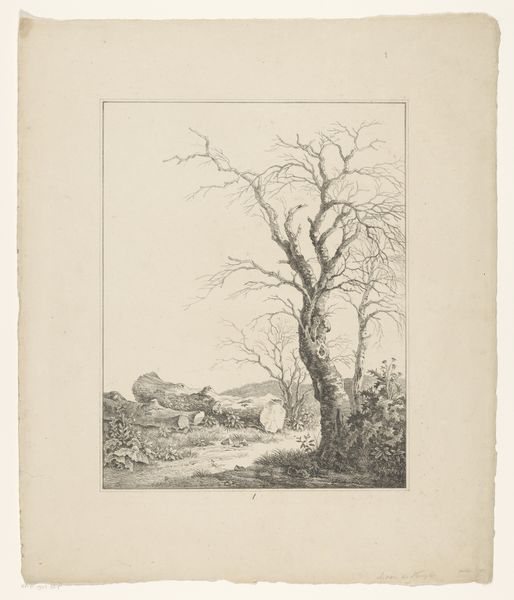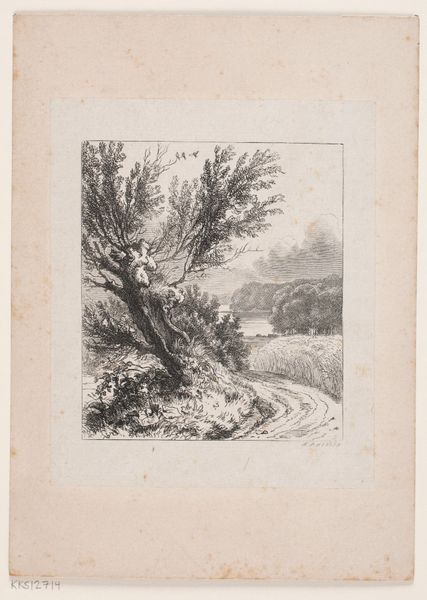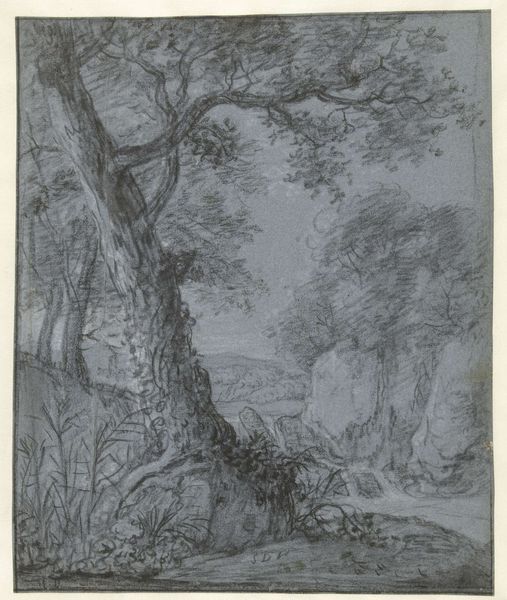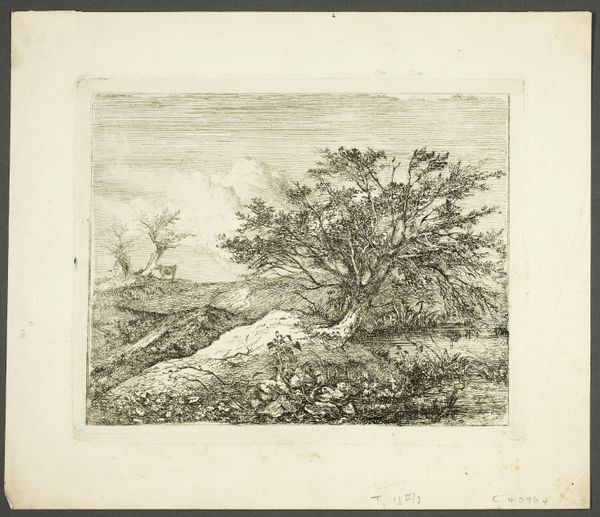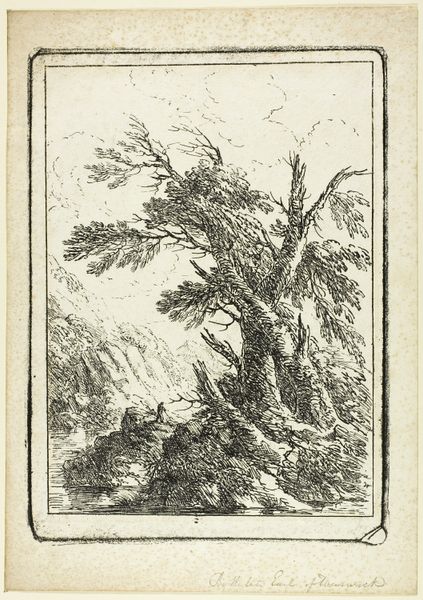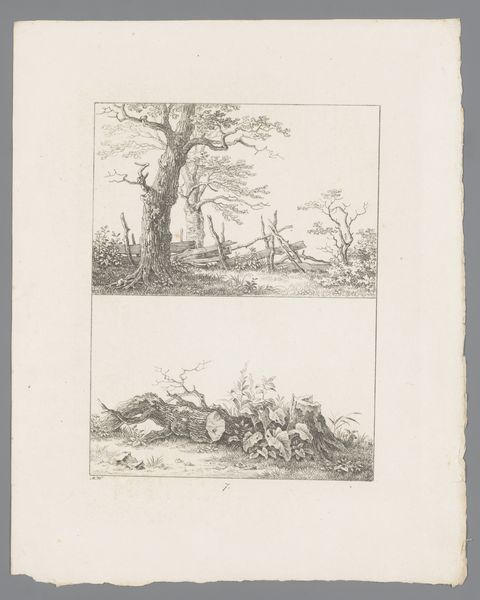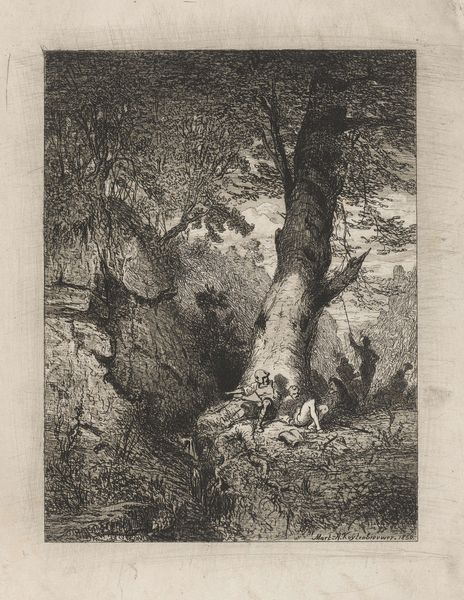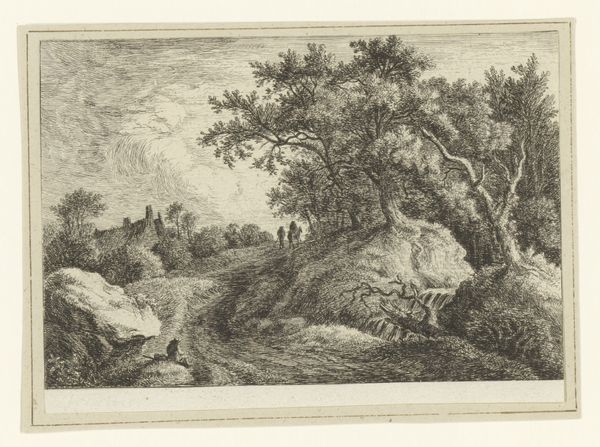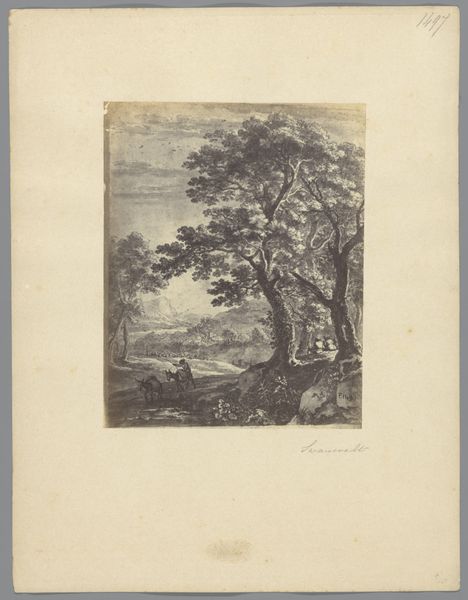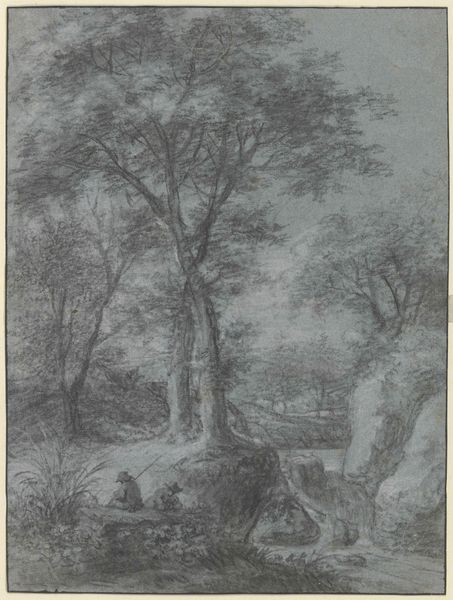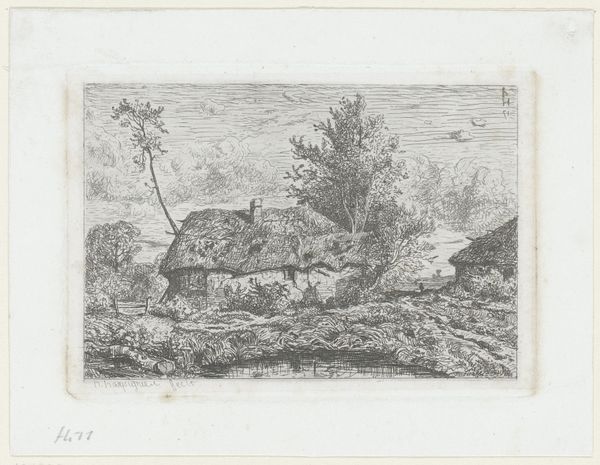
drawing, print, etching, paper
#
drawing
#
aged paper
#
toned paper
#
light pencil work
# print
#
etching
#
landscape
#
paper
#
romanticism
#
france
#
sketchbook art
Dimensions: 141 × 127 mm
Copyright: Public Domain
Editor: So, this is "Lake in the Mountains, from Revue Fantaisiste," by Rodolphe Bresdin. It’s an etching, likely on paper, from the mid-19th century. It feels very dense, almost claustrophobic, with that large tree dominating the composition. How do you interpret this work? Curator: I see this piece as deeply embedded within the social and political upheavals of 19th-century France. Bresdin was known for his radical republicanism and anti-establishment views, which were often subtly woven into his art. Given the era, how might the density you perceive reflect a critique of the social structures he experienced? Does it mirror the crowded urban life that was rapidly developing at the time? Editor: That's interesting. I was focused on the artistic style, maybe the Romanticism, but I didn't really think about the politics of the time. So, the density might be symbolic of societal pressures? Curator: Exactly. And consider the title, “Revue Fantaisiste,” suggesting fantasy. Could this fantastical scene be a commentary on the lived reality of many during that period, perhaps highlighting their displacement or disillusionment? It's crucial to view even seemingly apolitical landscapes as potential sites of social critique. The artist uses Romanticism to reflect social criticism, unlike other artists of the same movement. What would society gain from works like this? Editor: So the romantic style isn't necessarily escapist, but reflective of the issues in French Society. I think it allows more people to be aware of it and possibly demand change? The people may also interpret these images in ways that support and unite them. Curator: Precisely. Art can catalyze conversation and, potentially, change. Editor: I learned how the political context of France during the 19th Century adds to the piece’s meaning. Curator: And I found a reminder of the importance of encouraging viewers to interpret art as both beautiful and political, particularly art that seems otherwise detached from such subjects.
Comments
No comments
Be the first to comment and join the conversation on the ultimate creative platform.

